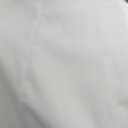Chemoprevention of skin cancer: effect of Lawsonia inermis L. (Henna) leaf powder and its pigment artifact, lawsone in the Epstein- Barr virus early antigen activation assay and in two-stage mouse skin carcinogenesis models.
Từ khóa
trừu tượng
In continuation of our studies with chemoprevention potential of plant-derived naphthoquinone derivatives, leaf powder of the medicinal plant Lawsonia inermis L, commonly known as 'henna', was evaluated by its inhibition of the Epstein-Barr virus early antigen (EBV-EA) activation induced by the tumor promoter 12-O-tetradecanoylphorbol-13-acetate (TPA) in Raji cells. Lawsone (2-hydroxy- 1,4-naphthoquinone), the reddish orange pigment artifact formed during the extraction or preparation of the dye from henna leaves and believed to be the active component, was also assessed in this in vitro assay. Both showed a profound inhibition (>88%) of EBV-EA activation. In the in vivo two-stage mouse skin carcinogenesis study using UV-B radiation for initiation and TPA for tumor promotion, oral feeding of henna (0.0025%) in drinking water ad libitum decreased tumor incidence by 66% and multiplicity by 40% when compared to the positive control at 10 weeks of treatment. Similarly, in the above mouse model, orally fed lawsone (0.0025%) decreased tumor incidence by 72% and multiplicity by 50%. The tumor inhibitory trend continued throughout the 20-week test period. Similar antitumor activities were observed when henna (0.5 mg/ml) was applied topically on the back skin in the UV-B initiated, TPA promoted and peroxynitrite initiated, TPA promoted mouse skin carcinogenesis models. Topically applied lawsone (0.015 mg/ml) also exhibited similar protection against tumor formation in the 7,12-dimtehylbenz(a)anthracene induced and TPA promoted skin cancer in mice. Also, there was a delay of 1 to 2 weeks in tumor appearance in both henna and lawsone treated groups compared to control in all three test models. This study ascertains the skin cancer chemopreventive activity of henna leaf powder and lawsone when administered by either oral (through drinking water) or topical (by application on the back skin) routes. Further, it emphasizes the need for the evaluation of these henna-derived green chemopreventive candidates in combination with currently used sunscreen agents for complementary anticancer potential against UV-induced skin carcinogenesis.




